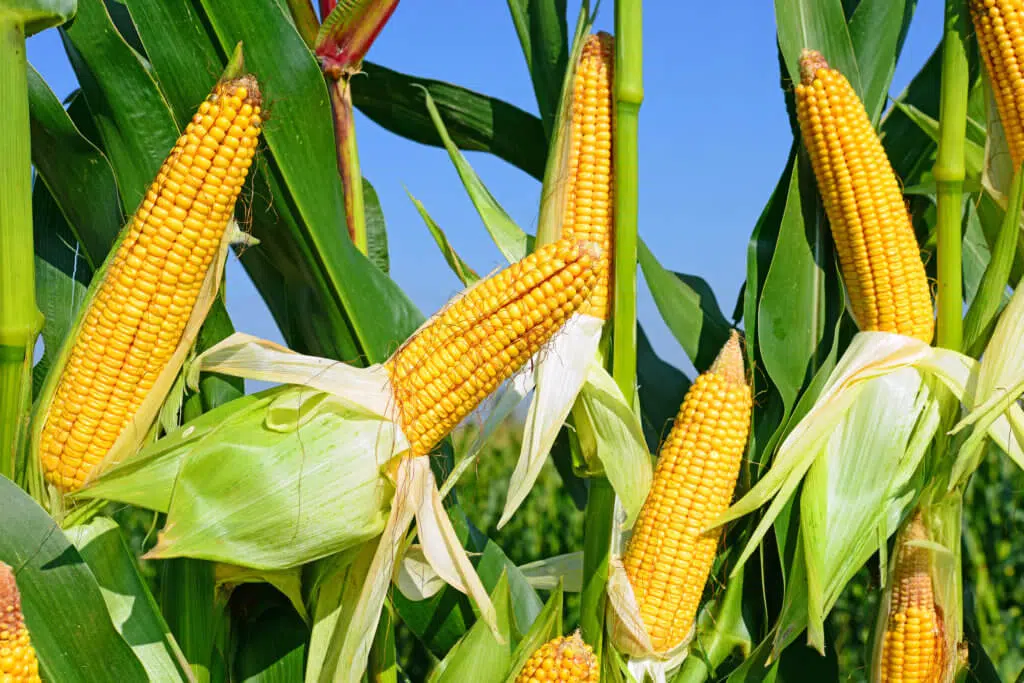It has been shown by several studies that metabolisable energy (ME) values vary significantly, not only between different feed ingredients, but also between different batches of the same feed ingredient within the same region. When formulating feed using tabulated values, this can result in the variability of maize ME of more than 50 kCal/kg between batches of complete feeds (Jiang, 2010).
Factors influencing the variability of maize
- Variation and distribution of protein
- Vitreousness, kernel hardness, and kernel density
- Phytate
- Harvest season, drying tmperature, and storage
- Cultivar
- Moisture content
- Kernel maturity
Variability of AMEn of maize
Leeson & Summers (1975) investigated the reduced yield of the 1974 Ontario maize crop due to poor growing and harvesting conditions. It was suspected that the crop had lower than normal energy levels as there were reports of increased feed to weight gain ratios in broilers. A total of 17 maize samples from this area were dried to a moisture content of approximately 15% prior to ME and net protein utilisation (NPU) determination and proximate analysis. The total collection method was used to determine ME values, which were corrected to zero nitrogen retention. The average ME value of the samples was recorded as 3,219 kCal/kg, 3% below the norm. However, the ME values ranged from 3,051 kCal/kg to 3,410 kCal/kg among the samples, indicating significant variation. It was concluded that these differences were due to the effect of adverse growing conditions on maturity at harvest, and may not be applicable for varietal effects of mature samples grown under more ideal conditions. Therefore, maize composition, sugar, and starch levels are related to differences in maize maturity at harvest. The more immature samples had lower ME values, and contained lower proportions of starch and higher proportions of sugar in comparison to the mature samples.
Leeson et al. (1977) conducted a follow-up study on the 1974 maize crop to determine the energy content of three different maize hybrids of known moisture levels representing a range of kernel maturity. The ME content of twelve samples (four for each type of hybrid) was determined by the total collection method and correlation coefficients were calculated, relating ME values to bushel weight, 100 kernel weight, and moisture content at harvest. The ME values of the three hybrids ranged between 2,972 kCal/kg and 3,344 kCal/kg. These conclusions confirmed previous assumptions that immature maize provides less ME for poultry in comparison to mature maize.
In a later study, Leeson et al. (1993) investigated the apparent reduction in yield and feeding value of the 1992 maize crop of eastern Canada and the northern states of the United States of America (USA). These areas experienced adverse harvesting conditions due to unusually cool and wet weather. Harsh drying conditions were required due to the high moisture content of the crop. The study involved the proximate analysis and ME determination of 26 maize samples varying in bushel weight, of which the majority of the samples came from the same region. The total collection method was used for ME determination and, although the mean analysed ME value was about 3% less than the common standard value, the ME values were surprisingly high considering the harsh growing, harvesting, and drying conditions. The ME values of the maize samples ranged from 2,926 kCal/kg to 3,473 kCal/kg, with an average of 3,218 kCal/kg. The calculated standard deviation was 162 kCal/kg, indicating large variation in ME values of the same maize crop.
Gehring et al. (2012) conducted an experiment to evaluate corn quality both in vitro and in vivo, and determine relationships between salt-soluble protein content (SSP) and vitreousness with nutrient as well as energy digestibility. The study analysed 12 maize samples for proximate composition, followed by quality evaluation based on SSP and vitreousness. The apparent metabolisable energy (AME) values ranged from 3,262 kCal/kg to 3,342 kCal/kg, and was correlated with SSP (r=0,8; P<0,001) and apparent ileal digestibility (r=0,36; P<0,05). The authors concluded that maize sources with a similar proximate composition may vary in their digestible energy content but, because protein solubility is related to energy utilisation, SSP can be used as a tool to differentiate between maize sources of wide-ranging AMEn values.
Not all maize is created equal
Various studies conducted throughout the years confirm that the variability of maize between batches, and that its nutritional value is not as consistent as it was previously thought to be.
Intern: Poultry











Thought provoking article Sibong. I wonder if this would account for come of the variability we see in ruminant production systems. Thanks